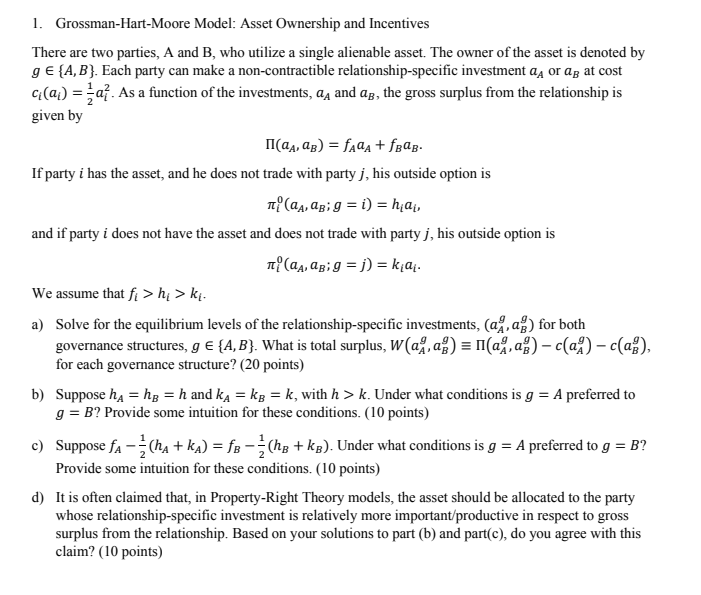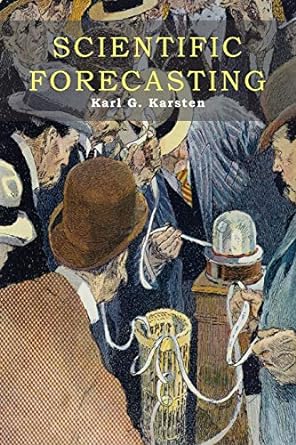
1. Grossman-Hart-Moore Model: Asset Ownership and Incentives There are two parties, A and B, who utilize a single alienable asset. The owner of the asset is denoted by {A, B}. Each party can make a non-contractible relationship-specific investment ax or ag at cost C:(a) = a?. As a function of the investments, a and , the gross surplus from the relationship is given by (ay, ab) = faaA + fpag. If party i has the asset, and he does not trade with party j, his outside option is T' (aq, apig = i) = hap and if party i does not have the asset and does not trade with party j, his outside option is ' (ay, agig = j) = kai. We assume that ft > h > k. a) Solve for the equilibrium levels of the relationship-specific investments, (am, ag) for both governance structures, g {A,B}. What is total surplus, W(am, a) = f(am, ag) - c(a) c(ag), for each governance structure? (20 points) b) Suppose ha = hp = h and ka = kg = k, with h > k. Under what conditions is g = A preferred to g = B? Provide some intuition for these conditions. (10 points) c) Suppose fa (ha + ka) = fb - (hp + kp). Under what conditions is g = A preferred to g = B? Provide some intuition for these conditions. (10 points) d) It is often claimed that, in Property-Right Theory models, the asset should be allocated to the party whose relationship-specific investment is relatively more important/productive in respect to gross surplus from the relationship. Based on your solutions to part (b) and part(c), do you agree with this claim? (10 points) 1. Grossman-Hart-Moore Model: Asset Ownership and Incentives There are two parties, A and B, who utilize a single alienable asset. The owner of the asset is denoted by {A, B}. Each party can make a non-contractible relationship-specific investment ax or ag at cost C:(a) = a?. As a function of the investments, a and , the gross surplus from the relationship is given by (ay, ab) = faaA + fpag. If party i has the asset, and he does not trade with party j, his outside option is T' (aq, apig = i) = hap and if party i does not have the asset and does not trade with party j, his outside option is ' (ay, agig = j) = kai. We assume that ft > h > k. a) Solve for the equilibrium levels of the relationship-specific investments, (am, ag) for both governance structures, g {A,B}. What is total surplus, W(am, a) = f(am, ag) - c(a) c(ag), for each governance structure? (20 points) b) Suppose ha = hp = h and ka = kg = k, with h > k. Under what conditions is g = A preferred to g = B? Provide some intuition for these conditions. (10 points) c) Suppose fa (ha + ka) = fb - (hp + kp). Under what conditions is g = A preferred to g = B? Provide some intuition for these conditions. (10 points) d) It is often claimed that, in Property-Right Theory models, the asset should be allocated to the party whose relationship-specific investment is relatively more important/productive in respect to gross surplus from the relationship. Based on your solutions to part (b) and part(c), do you agree with this claim? (10 points)







